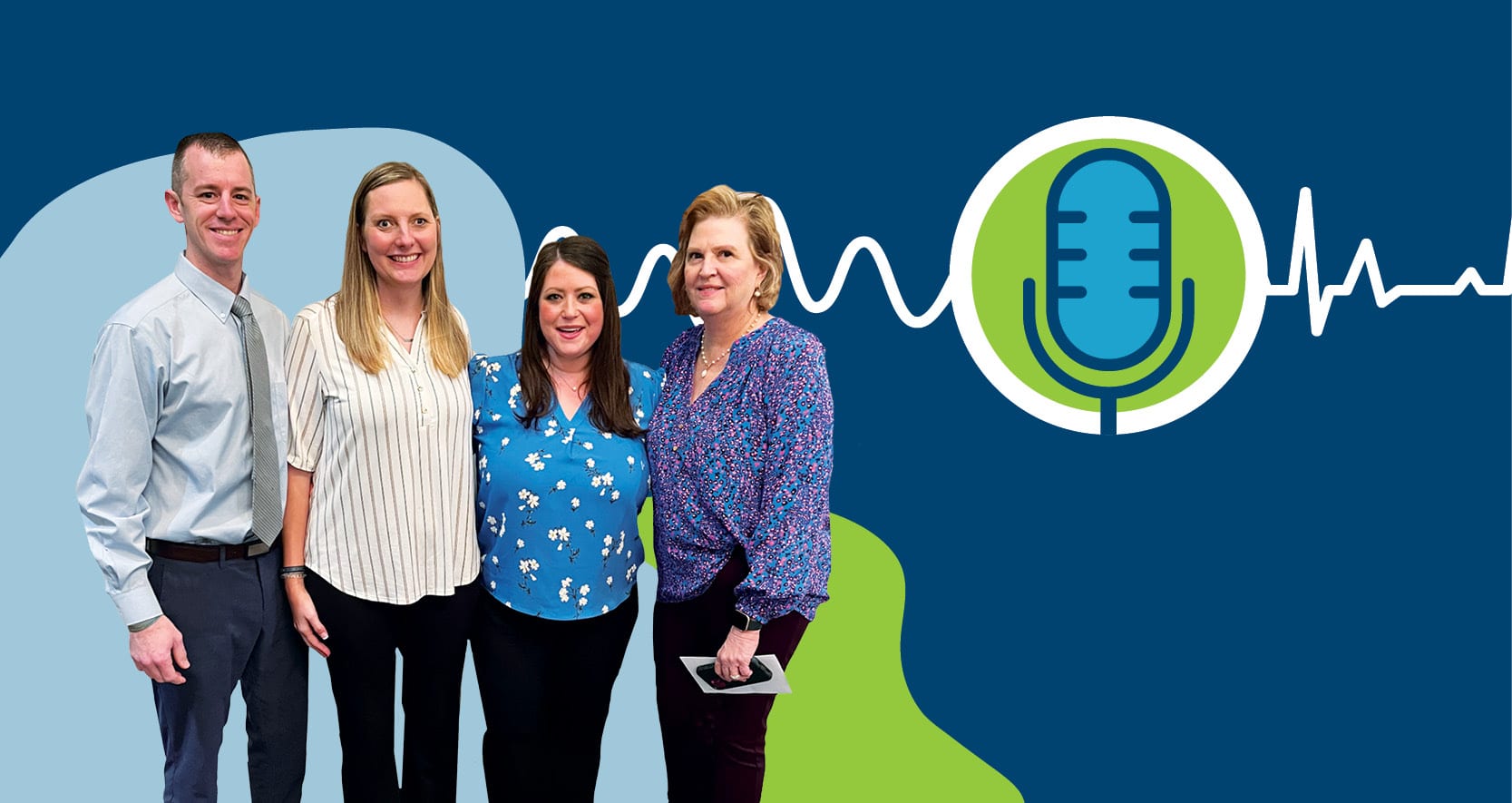Stroke is a leading cause of death in Mississippi and Louisiana, but learning the signs, symptoms and risk factors for stroke can save lives.
Ruth K. Fredericks, MD, neurologist and neuro-oncologist who is co-medical director of St. Dominic Hospital’s Comprehensive Stroke Center, and Amber Herron, the center’s program manager, joined us to talk about stroke prevention, treatment and recovery in this episode of our podcast, The Doctor Will Hear You Now.
Stroke Signs & Symptoms
A stroke is a medical emergency. With an ischemic stroke, the most common type, blood flow to the brain is blocked, preventing the brain from getting oxygen and nutrients from the blood. Brain cells begin to die within minutes.
The less common type of stroke is hemorrhagic, which is when a blood vessel to the brain ruptures, and outcomes are typically much worse than ischemic stroke.
The warning signs and symptoms of stroke include sudden onset of:
- numbness or weakness of the face, arm or leg, especially on one side of the body
- confusion, trouble speaking or understanding
- trouble seeing in one or both eyes
- trouble walking, dizziness, loss of balance or coordination
- severe headache with no known cause
The faster you can get help the better your outcome is going to be. If you or a loved one experiences any of the symptoms below, BE FAST and seek medical attention immediately.
B – Balance. Having trouble walking or with coordination?
E – Eyes. Seeing double or experiencing vision issues?
F – Face. Try to smile. If the smile is crooked, with one side of the face drooping, it may be a stroke.
A – Arms. Raise both arms in the air. If the arms are uneven and one can’t be held up for long, it may be a stroke.
S – Speech. Attempt to repeat a simple phrase. If speech sounds odd or slurred, it may be a stroke.
T – Time. Don’t waste another second. Call 911 immediately.
Stroke Treatment
Certain treatments can significantly reduce brain damage if accessed quickly. Time is so important when it comes to stroke treatment. For ischemic stroke, the gold standard treatment is tPA (tissue plasminogen activator), which works to dissolve the clot blocking blood flow. It’s most effective when given within 4.5 hours of the onset of stroke symptoms.
This “clot buster drug” can be given by designated hospitals across the state. Emergency medical personnel are included in a stroke system of care network and prepared to route patients to the appropriate facility for the fastest access. So, it’s important to call 911 rather than driving yourself or being driven to a hospital. “It makes a difference to let EMS take charge,” Dr. Fredericks says.
Clot retrievals are another treatment used for those who have a large vessel occlusion (blockage). There is typically a 24-hour window of eligibility for this procedure that can remove an obstruction from an artery in the brain.
Stroke Recovery
“Living in limbo is the worst part about healthcare when a patient and their family don’t really know what’s happening,” Dr. Fredericks says.
It can take up to three days to do a complete workup on a patient and decide on the best treatment plan. It’s a multi-disciplinary effort including neurology, pharmacy, hospital medicine, and physical and occupational therapy together for daily rounds each morning.
“Everyone goes around to the patients’ rooms,” Herron says. “The family is there, the patient is there and we’re meeting to decide what’s best for that patient in that period of time. When everyone is on the same page with a common goal, that’s helped greatly bridge that gap.”
A rock star patient who worked extremely hard and has had a good outcome, Lauren Pogue and her husband, Jeremy, shared the story of her stroke experience and recovery in this episode as well.
Stroke Prevention
The southeast U.S. is commonly called the “stroke belt” because of our higher incidence of stroke.
The biggest risk factors for stroke are:
- Uncontrolled hypertension
- Uncontrolled diabetes
- Heart abnormalities
- Smoking
- High cholesterol
Many strokes are preventable through lifestyle choices and breaking bad habits, including eating well and avoiding nicotine in all forms. Stop smoking to decrease your stroke risk.
In general, knowing your numbers and taking medications as prescribed can reduce your risk of stroke. “Seeking primary care is your first line of defense against stroke,” Dr. Fredericks says. “The main thing is to take your blood pressure medicine. That’s a lecture I give just about every morning.”
Unfortunately, not all strokes are preventable. “Yes, you can get a stroke with a totally normal lifestyle,” Dr. Fredericks says. Those usually happen in people with vascular malformations or other genetic conditions.
Stroke Care Across Our Health System
Situated in the heart of the stroke belt, St. Dominic’s Comprehensive Stroke Center is uniquely positioned because it offers rapid diagnosis, high-tech intervention, expert care and intensive rehabilitation in a caring, compassionate setting. As a comprehensive stroke center of excellence, St. Dominic Hospital has the highest level of stroke certification available and is the first in Mississippi to earn the designation from The Joint Commission.
“We can provide care at all times, 24/7 complex stroke patients eligible for tPA all the way through post-treatment intensive monitoring area and recovery,” Dr. Fredericks says. “We have neuro-interventionalists who are intensivists with special training taking care of our neuro patients because taking care of a brain patient is different.”
Our Lady of the Lake Regional Medical Center in Baton Rouge and Our Lady of Lourdes Regional Medical Center in Lafayette are designated primary stroke centers of excellence.




